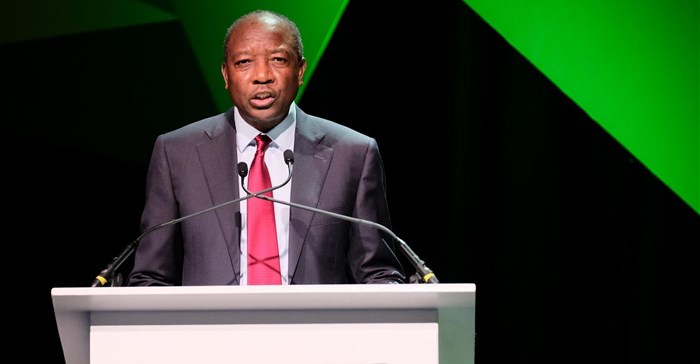
Subscribe & Follow
Advertise your job vacancies
#miningindaba18: Five things in mining that need to be fixed
There are five main areas that can help bring investment back into the mining sector, and these are the political environment; the regulatory environment; rail and port infrastructure; financial returns and fund flows, and; investment promotion, Norman Mbazima, deputy chairman: Anglo American South Africa told the Investing in African Mining Indaba taking place in Cape Town.

Norman Mbazima, deputy chairman, Anglo American South Africa
Political environment
“Firstly, I would like to argue that although it may unsettle us at times, the changing dynamics in our politics is a shaping force that we must reckon with positively.
“In this regard, it was encouraging to see how the internal rules and processes of the African National Congress, South Africa’s governing party, were observed even during a hotly contested elective conference last December. This resulted in a credible outcome, which we think is a significant ‘first step’ towards stabilising the political dynamics in our country,” he said.
Regulatory environment
Mbazima tackled the current regulatory environment, saying it is anything but a conducive, given that:
- The industry is awaiting a court judgement on the ‘once empowered, always empowered’ principle;
- The industry is in court with the government on disputes concerning the third Mining Charter;
- Every time that the charter is reviewed, targets are changed;
- The amendment of the principal legislation, the MPRDA, commenced in 2012 and has still not been completed, six years later. It is probably time to start the next amendment; and
- The relationship between the Department of Mineral Resources and industry is at an all-time low.
“As in all matters brought before courts, the current legal disputes are well defined and narrow. However, the issues that need to be resolved are comprehensive and can only be resolved by dialogue and engagement to arrive at a regulatory regime that works for everyone. One that is clear, concise, and consistent.”
Rail and port infrastructure
“Thirdly, bringing back investment into our sector is also dependent on our ability to revitalise crucial infrastructure, especially rail and port networks,” Mbazima said.
“A large portion of our production by value is bulk commodities like iron ore, coal, and manganese. These are produced in inland mines and need to be transported to the coast, loaded onto ships, and taken to overseas markets like China, India, and Europe where they are required.
“In the 15 years that I have been associated with this industry, I have not seen any significant expansion of the rail capacity for transporting these products to our ports. For the mining industry to grow, we need to urgently expand our rail and port networks."
Most of the large infrastructure projects around the world have happened when government has taken the risk to invest in infrastructure to encourage investment, or when government has put in regulations allowing the private sector to do so. Increasingly, there is a move towards public private partnerships as an enabler for infrastructure development.
Financial returns and fund flows
To get approval for funds to build new mines or expand existing ones, management teams have to go to their investment committees and boards to justify why such an investment is appropriate, including compared to alternative investment options elsewhere. This means being able to demonstrate that the project will be able to meet all the costs that are legitimately required to be borne before a profit can be returned—including taxes, labour, procurement, community and regulatory costs.
Investment promotion
“Put yourself in the shoes of the boards taking these multi-decade investment decisions. It’s tough and we have to compete for limited capital. Unless investors can see that all of us have confidence in our economy, our democracy, and our institutions, they will take their money elsewhere.
“We have to go out there and talk about our investment climate—how and why it is a welcoming one for investors. An important part of this is hearing one aligned voice from government, business and labour, just as was the case a few weeks ago in Davos.
I am frequently asked about Anglo American’s commitment to investing in South Africa. There is no better place than South Africa to see the contribution we have made, both past and present,” Mbazima said.
The Investing in African Mining Indaba takes place at the Cape Town International Convention Centre from 5-8 February 2018.









